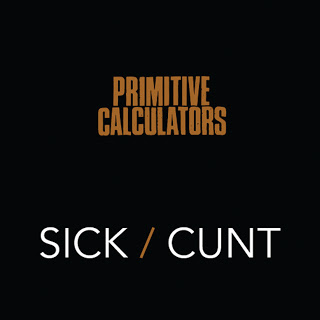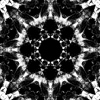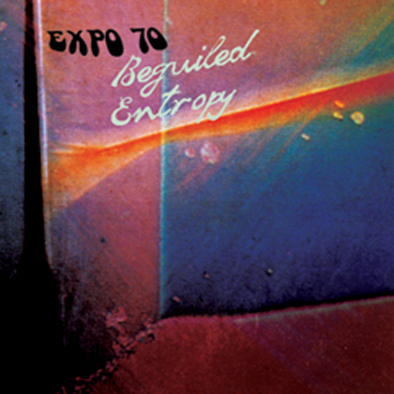- Administrator
- Albums and Singles
Quarter Turns Over A Living Line is the debut album by Raime.
It follows the duo's self-titled 2010 EP and two subsequent 12" singles, If Anywhere was here we would know where we are and Hennail.
Moving away from the sample-based strategies that characterized their early work, Joe Andrews and Tom Halstead have looked increasingly to live instrumentation for their first full-length, mounting intensive recording sessions for percussion, guitar and strings before painstakingly piecing the album together at their home studio. The gothic and industrial signifiers in their music remain, but more submerged and oblique than ever - no more pronounced as influences than jungle's rhythmic dynamism and doom metal's oppressive weight, or aspects of techno, modern composition and dub.
The 7-track album is due to be released on November 19 on 2x12", CD and digital formats. The cover art is derived from an original photograph by William Oliver, produced in collaboration with Raime and featuring dancer Rosie Terry.
More information here.

Read More
- Administrator
- Albums and Singles
 While I still have some minor misgivings about its execution, Nadja have certainly found a way to make their latest release a noteworthy and meaningful event: they have made a rock album (at least, as much of a rock album as could be expected from them).  That is something of a quixotic move, as songwriting and singing are not exactly the duo's greatest talents, but the inspired addition of Jesus Lizard drummer Mac McNeilly definitely makes Nadja's signature doomgaze aesthetic a lot more punchy and immediately gratifying.  It is a marriage that will probably yield some truly wonderful results somewhere further down the line, but Dagdrøm is more of a promising, oft-successful experiment than a revelation or total creative rebirth.
While I still have some minor misgivings about its execution, Nadja have certainly found a way to make their latest release a noteworthy and meaningful event: they have made a rock album (at least, as much of a rock album as could be expected from them).  That is something of a quixotic move, as songwriting and singing are not exactly the duo's greatest talents, but the inspired addition of Jesus Lizard drummer Mac McNeilly definitely makes Nadja's signature doomgaze aesthetic a lot more punchy and immediately gratifying.  It is a marriage that will probably yield some truly wonderful results somewhere further down the line, but Dagdrøm is more of a promising, oft-successful experiment than a revelation or total creative rebirth.
Nadja is a bit of an unusual case for me, as I genuinely enjoy the niche that they have have staked out for themselves (generally slow-motion avalanches of heavily distorted guitars), but find the sheer volume of their output both baffling and exasperating.  By my count, Nadja currently have over 18 releases, most of which are variations on a pretty narrow theme.  That makes it quite difficult for a casual fan like myself to muster any enthusiasm for a typical new album, which is why a bold divergence like Dagdrøm was almost a necessity at this point.
In most respects, Nadja's transition to a more conventional "doom metal band" sound is a huge success.  McNeilly's drumming, for example, is quite an invigorating, dynamic, and potent addition.  Rather than playing at a doom-y crawl or attempting to dazzle me with virtuosic fills, Mac instead opts for the punkier "bash-and-bludgeon" approach, which proves to be the perfect counterbalance to Baker and Buckareff's wall of sludge.  That is not hyperbole, as I cannot imagine these songs working if the drums were less blunt and visceral.  Besides that, the album is strewn with great grooves, crushing walls of distortion, and squalling crescendos.  All of that pleases me.
Unfortunately, lots of great parts does quite not equal a great album in the case of Dagdrøm (though it certainly comes very, very close).  Nadja's biggest stumbling block is probably the buried/whispered/mumbled vocals: it almost seems like Baker's mindset was "Songs need to have singing, I guess.  Hand me a microphone, I'll add some now."  That is not to say that the vocals are bad—they are not.  However, they do feel completely inconsequential and add nothing to the songs.
Another issue is that the songs are perhaps a bit overlong.  I have no problem with their more ambient-minded work stretching out for 20 minutes or more, but a one- or two-riff "song" definitely overstays its welcome a bit when it exceeds ten minutes.  I also feel that this new direction sacrifices some of the band's distinctiveness, but the staggering density of passages like the outro of "Falling Out of Your Head" are still pretty uniquely Nadja-esque.  I suppose that is less of a flaw than an interesting artistic choice, as these songs tend to build towards sounding like Nadja (albeit an atypically ferocious version) rather than sounding instantly recognizable as such.
I feel like I am probably over-thinking and over-critiquing this effort a bit, but I cannot help it–it comes so exasperatingly close to being absolutely crushing.  In fact, despite its flaws, it is probably the single most essential Nadja record around: longtime fans will definitely want to hear Aidan Baker and Leah Buckareff rip shit up (it is easy to imagine parts of "Space Time and Absense" whipping a mosh pit into a frenzy), while this is probably the most instantly likable window into Nadja's world that a curious listener could hope to find.  Sure, it is not quite the Nadja sound, but there are more than enough glimpses of it to lure new fans towards their more experimental, long-form work.  As a result, Dagdrøm presents a very unusual situation: it is not the band's best work, but it is an unqualified success in all other regards (direction, appeal, choice of drummer, and general bad-assness).
Samples:
 
Read More
- Administrator
- Albums and Singles
 Cankun's music is an exercise in stretching pop hooks to their logical extreme. They push back against standard compositional forms by forcing a rigid, dutiful recurrence on their melodies, layering them with more and more complex loops in the style of electronic music until they reach a kind of psychedelic apex.
Cankun's music is an exercise in stretching pop hooks to their logical extreme. They push back against standard compositional forms by forcing a rigid, dutiful recurrence on their melodies, layering them with more and more complex loops in the style of electronic music until they reach a kind of psychedelic apex.
Idle is a record of anticipatory bliss, full of shimmering guitars, echoing drum machines, and ambient harmonics pulsating throughout. Peaceful chords and whirring resonant drones pervade each song with increasingly beautiful effect, but they never actually seem to go anywhere. To some, this might seem like the work of a group trapped in the initial stages of writing a summer pop anthem. But Cankun's music touches on a different nerve than standard verse-chorus-verse payoff. Their songs are focused on capturing a single, perfect moment through guitars and drums, then recreating that moment ceaselessly until nothing else can be done with it. The music chooses to remain stationary, but it stills feels as if, by listening to it, you are going somewhere, moving in some direction. There are obvious similarities to krautrock or early psychedelia, mainly in the sense that Cankun wants to achieve more with less.
Cankun break up the eight minute "Sneakers" in half, with two similarly structured guitar loops and cascading waves of synthesizer coloring each part in gradually more intense ways. On "Where's Zion?," they introduce vocals in the song's second half, repeating a single indecipherable mantra over and over as it slowly becomes more yelling than singing. On "I Know You Love To Dance," they apply lo-fi distortion to a persistent strum of guitars and metallic percussion, which blurs into a haze of noise before fading away. The closing song, "Water Alps," features drums in the forefront, where they collide playfully over what sounds like a passing train.
Each piece is distinctly crafted as if to designate a certain space, or a place in time. In fact, taken as a single document, the six songs on Idle might appear to be a set of six photographs, exactly detailing the events of a day in the form of specific points plucked from its hours. A persistent theme of hazy, filtered pop and repetition is omnipresent, but the constant reinforcing of that theme—of recurring memories and the bliss of lingering in them—makes the album more cohesive than monotonous. Cankun has built small but pleasant glimpse into another world.
samples:
Read More
- Administrator
- Albums and Singles
 Jeff Carey makes cathartic, head clearing bursts of noise, bereft of any kind of real context. This is the latest in a number of releases from the electronic composer, who employs re-purposed game pads and other devices to create a mixture of arresting high pitched catalytic noise and digitally manipulated drones.
Jeff Carey makes cathartic, head clearing bursts of noise, bereft of any kind of real context. This is the latest in a number of releases from the electronic composer, who employs re-purposed game pads and other devices to create a mixture of arresting high pitched catalytic noise and digitally manipulated drones.
Carey controls his sound–completely improvised and recorded with few adjustments, as far as I can tell–by means of circuit bent equipment, managing filters and unexplainable sources of random noise with idiosyncratic spontaneity on a joystick. From a very limited palette he manages to assemble a wide, apparently limitless range of textures and atmospheres. Especially notable is his grasp of dynamics and buildup, which is what sets this release aside, lending just the slightest sense of humanity to what is otherwise cold, completely computerized noise.
The opening "Lag" is an assault by a singular statement–a constant burning shriek that sounds like hundreds of cracking bones and power tools being used incorrectly. "Struct" pops in and out of silence with permutations of a few static oscillations, while "Fold" burns ominously, with microscopic pops and clicks whirring above a distant eerie hum. The most variety comes from "Thresh," where Jeff commits eight minutes to discovering the whole range of sounds possible from his equipment. I can't help but be entranced by it even after repeat listens.
I feel a bizarre sense of reassurance from Carey's noiser moments, which are cathartic in their brute strength and sheer single-mindedness. However, I feel like some of the record suffers from not experimenting with contrasts more. His best moments, such as "Thresh," offer an endless universe of different sounds and effects, from the malevolent to the subtly sublime. Even in the unrelenting "Chop," the frequent use of ominous silence empowers the aggressive blasts of harsh noise, lending them a climactic intensity.
On much of the album, especially the latter half, Jeff Carey focuses more on a few specific high pitched buzzing sounds which resembled swarms of insects flying back and forth and dangerously close. They were interesting at first listen, but with Jeff's music there's a capacity for any number of impossible shapes and contours, so I was a little underwhelmed (and honestly surprised) that he produced the same sound more than once. Still, a good majority of the album is delightfully unpredictable, so I'm just nitpicking. It might be familiar territory, but Carey's music continues to find a niche by remaining confusingly, vibrantly fresh.
sample:
Read More
- Administrator
- Albums and Singles
 This latest release captures the ever-prolific Shiflet in one his more "ambient" moods, offering a more conventionally musical and slightly less-scary window into his work than his recent, more epic Sufferers/Merciless diptych on Type.  Naturally, some of Mike's noisier and weirder impulses still make their (welcome) appearances, but these nine relatively short pieces balance his harsher textural themes with an unexpectedly varied palette of sublime shimmers, woozy guitars, and some very wrong-sounding violin.  This definitely ranks as one of Mike's most inspired release to date (and possibly his best).
This latest release captures the ever-prolific Shiflet in one his more "ambient" moods, offering a more conventionally musical and slightly less-scary window into his work than his recent, more epic Sufferers/Merciless diptych on Type.  Naturally, some of Mike's noisier and weirder impulses still make their (welcome) appearances, but these nine relatively short pieces balance his harsher textural themes with an unexpectedly varied palette of sublime shimmers, woozy guitars, and some very wrong-sounding violin.  This definitely ranks as one of Mike's most inspired release to date (and possibly his best).
Mike Shiflet has found a pretty wonderful and unique way to make drone music, insomuch as he has basically figured out how to make harsh noise seem warm and listenable.  At the risk of sounding like I am gushing, it is a rather marvelous and difficult feat to pull off.  He does not do it with every song on The Choir, The Army, but such pieces certainly dominate the album and give it its character.  The trick sounds rather simple, as he essentially just combines quavering synths with a seething bed of grinding, hissing noise.  The execution is the tough part, however, and Mike nails it perfectly on pieces like "1917," "Zahlentheorie," and "Omnicron Serenade."
Impressively, each of those pieces sounds radically different from the others.  Also, many of the album's other pieces sound even more radically different, yet the album somehow feels thematically coherent and flowing.  It is also endlessly listenable, owing to its unusual and conspicuous absence of melodies or chord changes.  The secret seems to lie in the hyper-minimalism of the music, as these pieces rarely contain anything more than a single note or chord, nor is there any straightforward melodic or harmonic development.  This album is almost entirely textural and the textures are dense, vibrant, and unpredictable enough to seem fresh and visceral every time I listen.  In fact, some songs dispense with any musical component altogether, like the roaring chaos of "Attrition," which sounds like a bulldozer driving through a factory that is on fire (which is a compliment, obviously).
Shiflet allows the pendulum to swing entirely the other way near the end of the album, however, as "Inching" is all shimmering synths and languorous, blurred guitars.  Then the album's brief closer, "Yonder," continues that theme of melodicism, but perverts it into something truly disturbed and disquieting–it sounds like someone playing a mournful, out-of-tune violin along with an insistent, warbling, and discordant tape loop of a guitar while the apocalypse rages outside the window.  I am not sure if it is the album's best, most inventive piece or not, but I do know that nothing could have followed it.
I am truly surprised by how much I love this album, as I did not expect Shiflet to be this absorbing and powerful with such short songs, nor did I expect these nine pieces to cohere into such a beautifully constructed and sequenced suite.  I also did not expect it to be so ingeniously varied, seamlessly combining fragile beauty, cosmic horror, and howling entropy into a twisted fun house of an album that exceeded my expectations in every way.  This is sound art at its absolute best.
 
 
Read More
 Primitive Calculators' no wave/synth-punk reputation rested primarily upon their self-released 1979 single "I Can't Stop It," and their involvement in Richard Lowenstein's 1986 film Dogs In Space. They were hoisted to appear at the Nick Cave-curated 2009 Australian ATP, though, and have since gigged with both Psychic TV and Lightning Bolt. This release features a song from their past and a new one. Both are powerfully obnoxious, if not as mercifully brief as I'd wish.
Primitive Calculators' no wave/synth-punk reputation rested primarily upon their self-released 1979 single "I Can't Stop It," and their involvement in Richard Lowenstein's 1986 film Dogs In Space. They were hoisted to appear at the Nick Cave-curated 2009 Australian ATP, though, and have since gigged with both Psychic TV and Lightning Bolt. This release features a song from their past and a new one. Both are powerfully obnoxious, if not as mercifully brief as I'd wish.
- Administrator
- Albums and Singles
 Although this is a split release, and the two artists inhabiting each side of the vinyl (or tape) are sonically quite different from each other, the fact that they both inhabit that nebulous void between metal, industrial and noise makes them a good pairing. While it is always clear what side of the release is playing, the two compliment each other quite well.
Although this is a split release, and the two artists inhabiting each side of the vinyl (or tape) are sonically quite different from each other, the fact that they both inhabit that nebulous void between metal, industrial and noise makes them a good pairing. While it is always clear what side of the release is playing, the two compliment each other quite well.
Mamiffer, the husband and wife duo of Aaron Turner and Faith Coloccia, contribute two rather different pieces on their side."Sophia" pairs Coloccia's understated piano playing with slow burning electronic noise.It is constantly changing and mutating, and eventually the piano and noise melts together into an oddly dissonant melody before closing on the harsher end.
"Tich√° Noc" leans more into the distorted end of the spectrum, with some delicate tones buried admits the static and feedback.Heavily treated vocals from both appear, and it even makes the leap into full on, bass-overdriven power electronics squall, but never for too long, and it continues to balance the more beautiful, melodic elements with the uglier, dirty ones.
On the other side, the enigmatic Pyramids (which also features Coloccia alongside a wider cast of musicians) goes for an occasionally prog-tinged, but overall more conventional electronic sounding piece in "This is One for Everyone".Stuttering canned rhythms lean into krautrock grooves at times, but the beats and lush synth passages never stand still, eventually transitioning over into improvised percussion and messy crashes.Given its unrelenting pace, it is disorienting at times, to say the least.
Even with both Pyramids and Mamiffer embracing a constantly evolving, soundtrack collage approach to their music, the results are quite different from one another.Mamiffer drifts more into the avant garde/musique concret world, while Pyramids brings the melody and rhythms of a more traditional rock band into this abstract composition.Their differing approaches work well together though, and each side of this album is the better due to its counterpart.
samples:
 
Read More
- Administrator
- Albums and Singles
 Following three albums worth of long-form drone pieces, Michael Page (Fire in the Head) has instead returned with a suite of more song-like compositions, with a slew of collaborators, including Jarboe and Danny Hyde. The final product is a diverse, yet cohesive set of tracks that function exactly how an album should.
Following three albums worth of long-form drone pieces, Michael Page (Fire in the Head) has instead returned with a suite of more song-like compositions, with a slew of collaborators, including Jarboe and Danny Hyde. The final product is a diverse, yet cohesive set of tracks that function exactly how an album should.
Small Doses/First Light
It is perhaps due to this diverse group of contributors that the album comes across as the most varied I have yet heard from Page.His penchant for elongated, dark ambient pieces is never far from view:even though it is more of a traditional album, three tracks still clock in at over the ten minute mark.The solo pieces, "Shedding the Husk" and "Bone to Beak (The Vultures Speak)" are indeed most in-line with his previous discography, the former especially being a slow-build horror piece of dramatic strings and noisy percussion, rising to an almost ambient peak before falling into brilliant static-heavy industrial banging.
Opener "Incantare" features both Jarboe and Troum, and both make their contributions quite clear.Troum's drone expertise is clearly present in the form of echoy reverb and dense, swirling electronics, but balanced out by processed excerpts of Jarboe's voice, understated and effective.Page, however, is the person who pulls it all together in a complex, constantly evolving composition.
Danny Hyde's contributions, "Carne[val]" and "Fools Circel 9wys" seem to be solo works, and stand out as sounding pretty significantly different than the rest of the album.Both are lo-fi stuttering collages of voice fragments and unidentifiable electronics.The former certainly embraces that carnival music vibe hinted at the title, in the form of dark pseudo-melodies that eventually fall into a chaotic digital noise fest at the end, while the latter ends up going for a more rhythmic structure.
The biggest departure is on "Beyond the Veldt", featuring former Hawkwind vocalist Bridget Wishart (coincidentally Nik Turner was a guest on last year's Aegri Somnia).The heavy reverb and electronic passages are shaped into a melancholy melody, with a stiff drum machine and Wishart’s voice concocting a unique take on a gothic shoegazey piece of music.For me, it is this perversion of conventionality that makes it the centerpiece of a great album.
Previous Sky Burial albums have always been exceptional pieces of dark ambient experimentation and drift, but There I Saw the Grey Wolf Gaping pulls those pieces together into what comes across as a more fully realized album.It is no slight against those previous works, but here it just all comes together exceptionally well.
samples:
 
Read More
- Administrator
- Albums and Singles
Since upsetting the techno multiverse with Man With Potential last year, ex-Yellow Swan Pete Swanson has tirelessly continued his exploration of the form, quickly breaking it down and moulding it in his image. Pro Style is the result of those experiments, and finds Swanson at his most explosive, with his archetypal searing synthesizer blasts directed over warehouse kicks worthy of the Downwards catalogue. This is possibly Swanson's most technoid investigation to date, but any 'mainstream' form is peppered with more than enough failure to put a smile on the faces of unconvinced Yellow Swans fans. Pro Style is far from Berlin's precise minimalism, instead taking a raw, hands on direction that we haven't heard in the genre for many years. Whether you're in the club or in the basement, Swanson's pounding kicks and (surprisingly) booming basses should keep the apocalypse at bay, for now at least.
More information can be found here.

Read More
- Administrator
- Albums and Singles
 When I think of Justin Wright's Expo 70 project, I instantly think of two things: "improv" and "guitar."  That is something I probably need to cure myself of: while Beguiled Entropy certainly contains both of those elements, it so thoroughly transcends them in places that I completely forgot about Wright's chosen methods and tools.  This is an album of vision and focus that is far more evocative of nocturnal, neon-lit emptiness and menace than of a guy hunched over a battery of effects pedals.  In fact, this would have been the perfect soundtrack to Drive had Nicholas Winding Refn eschewed retro kitsch for stylized bleakness, paranoia, and retro-futurism.
When I think of Justin Wright's Expo 70 project, I instantly think of two things: "improv" and "guitar."  That is something I probably need to cure myself of: while Beguiled Entropy certainly contains both of those elements, it so thoroughly transcends them in places that I completely forgot about Wright's chosen methods and tools.  This is an album of vision and focus that is far more evocative of nocturnal, neon-lit emptiness and menace than of a guy hunched over a battery of effects pedals.  In fact, this would have been the perfect soundtrack to Drive had Nicholas Winding Refn eschewed retro kitsch for stylized bleakness, paranoia, and retro-futurism.
This album was originally recorded sometime last year following a recording hiatus, which somehow did not prevent Justin from churning out 13 other releases (by my count) between 2011 and now.  This seems to be one of his rare "major releases" though, as most of the others were cassettes, CDrs, or collaborations.  And no one would have the temerity to release a substandard or lackluster album on totally bad-ass-looking orange and blue swirled vinyl (at least, I would hope not).
The recurring element that holds the entire album together is a brooding, but relatively static, synth drone.  That seems like such a simple idea, but it turns out to be remarkably effective here, imbuing the album with a thematic cohesion and allowing Wright plenty of space in which to languorously work.  More importantly, he manages to use that relatively unvarying backbone to create five pieces that sound markedly different from one another.
For example, "Mark of the Rising Mantis" often sounds like a broken robot throwing a tantrum, while parts of "Luminous Traveler" could probably be mistaken for an instrumental stretch on a classic Pink Floyd album (owing mostly to its restrained, delay-heavy riffing).  "Sunseekers (Out of Diminished Light)" continues that neo-prog theme, but plunges even deeper into space, largely ditching any sort of rock-based structure in favor of some trippy, psyched-out synth burbling and distorted, reverb-heavy guitar soloing.
In general, however, I would say that Wright is most compelling when his songs are a bit more rigidly constructed and (comparatively) propulsive.  The first hint of this appears on the fourth piece, "Backmasking Deeper than Darkness," which continues the faux-Floyd, space rockism of its two predecessors, but escalates in intensity to a throbbing, hissing crescendo.  Justin's drum machine makes an even more prominent and welcome appearance in the album's wonderful closer, "Pulsing Rings of Ice."  Again, a deceptively simple idea is employed to powerful effect, as the relentlessly thumping beat feels like a jolt of late-album adrenaline after so much drifting psychedelia.
It also highlights something important, as it is the album's best and most memorable piece, but Wright's playing is extremely subdued.  With a simple beat around to do most of the heavy lifting, all Justin needs to do to make a piece work is establish a consistent and appealing mood.  I am not advocating laziness or anything, but it definitely seems like adding a strong rhythmic component goes a lot further in making a song immediate and memorable than hazy, psychedelic guitar improvisations (however good they are).
My sole issue with Beguiled Entropy is that there is still too much guitar soloing for my taste, but that is a pretty goddamn subjective problem to have, given that Wright's whole aesthetic is based primarily upon guitar improv.  Still, it sometimes feels like he is merely meandering or filling space rather than going somewhere purposeful.  In all other respects, however, this is quite an evocative and impressive album.  I was especially struck by how coherent and intelligently sequenced it all is, as these five pieces clearly belong together and cohere into a satisfying dynamic arc.
The pacing also works extremely well, as the few parts that tend to drag a bit are not nearly as irksome when experienced in the context of the entire album.  For example, some of the earlier pieces seem to lean a bit too heavily upon guitar solos when heard on their own, but perform a valuable function in the larger scheme of things (allowing the ominous mood to simmer for a while before ratcheting up the intensity).  While I would love for Justin to expand his musical palette a bit more, Beguiled Entropy is a remarkably absorbing and composed-sounding album for an unrepentant improvisor armed with little more than a synth and a guitar.
 
Read More
- Administrator
- Albums and Singles
 When Jim Haynes, head of the always fascinating Helen Scarsdale Agency, told me he would be releasing an almost pop record on the label, I was a bit surprised. Here is a label that, over the past 15 years, has perfected the sound of rusting, rotting audio. But with recent Ekin Fil releases hinting at a growing interest in musicality, the idea began to seem less bizarre. The first proper vinyl album from Nicole Carr (also known as Bloom Offering) fits perfectly in this niche. More conventional sounding than usual, but still experimental and challenging in its own way, it is a brilliant record that stands out among the best albums this year.
When Jim Haynes, head of the always fascinating Helen Scarsdale Agency, told me he would be releasing an almost pop record on the label, I was a bit surprised. Here is a label that, over the past 15 years, has perfected the sound of rusting, rotting audio. But with recent Ekin Fil releases hinting at a growing interest in musicality, the idea began to seem less bizarre. The first proper vinyl album from Nicole Carr (also known as Bloom Offering) fits perfectly in this niche. More conventional sounding than usual, but still experimental and challenging in its own way, it is a brilliant record that stands out among the best albums this year.
Probably the best reference point to describe the overall sound of Episodes is reminiscent of Suicide.Mostly in that Carr constructs slowly evolving layers of hypnotically repetitive electronics that tend to build unrelentingly, with her production and vocals giving a dark, sinister sheen to the whole thing.This is apparent right from the beginning of "Swallow Me Whole", with Carr’s distant, detached vocals spread atop a heavy kick drum, clanging snare, and brittle synth sequence."Fit of a God Complex" uses the same elements, but with a slower tempo and a drift towards greater abstraction at the end.
In addition to these more rhythm-centric pieces, Carr is no stranger to adding some melody to the mix as well.Bent voices and heavier beats may be at the core of "Imperfect Absence", but the depressive melodic progression that is blended throughout is the defining facet of a great song."Fishbowl" has a similarly melodic structure, but one that is a bit more uptempo in comparison, keeping things dynamic while still fitting within the overall sound of the album.The same goes for "Simple Math", which may begin in a very sparse place, packed with pitch shifted voices and Carr repeating the title of the song, but eventually locks into an faster tempo with some excellent arpeggiated synth sounds.
The whole record is amazing, but the pair of distinctly different songs that open the second side really drive home the variation and complexity that defines Bloom Offering."Venus Shrugged" is all distant, rattling thuds and vast, yet menacing spaces.Eventually Carr fleshes out the song a bit, but it is still an intentionally stripped down affair.This is immediately followed by "Out 2 Get U", which has some 1980s drum programming sounds befitting its Prince-esque titling, but the remainder is a nasty FM synth bass lead and hard, thumping beat.It may be a bit less experimental than some of the other songs here, but it is so well done, and with such a dirty, aggressive production to it, that it makes for a high point of the record.
While compared to some of the other releases on the label, Episodes may seem rather conventional, but Nicole Carr's take on stripped down synth menace and aggressive is just as challenging in its own right.It is a catchy and memorable synth heavy album, but one that carries a lot of its own emotional weight and darkness.It is this combination that made it stand out so strongly and has placed it among the best records of 2018 in my eyes.
Read More


